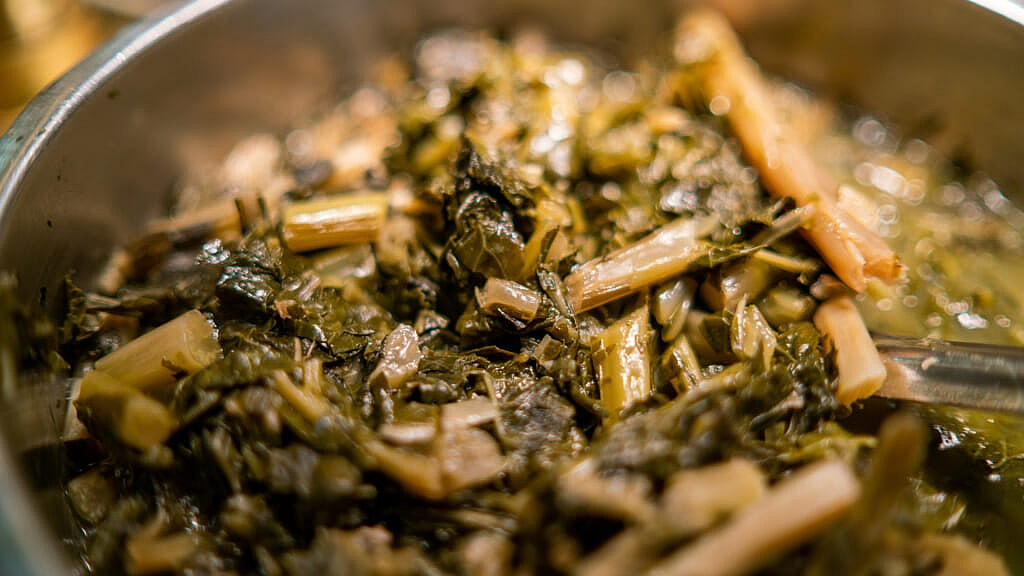Whether you boil them in other sauces, make a broth, fry them lightly or eat them raw in a salad, you can rest assured that collard greens’ place on the dining table will be preserved for posterity.
The Heirloom Collard Project, launched in 2016 by Edward H. Davis and John T. Morgan of Seed Savers Exchange, in collaboration with Southern Seed Exposure, called out to seed savers in the Carolina states, asking for rare varieties of collard green seeds “to regenerate them and share the seed with seed savers across the country,” according to its website.

The alliance requested another 60 varieties from the USDA to test at the Seed Savers Heritage Farm in Decora, Iowa. In the process of collecting the seeds from enthusiasts, fragments of the stories behind the different seed origins and various cooking methods were assembled, leading to an expansion of the mission of the team “to revisit the original seed savers and learn about these collards’ rich culinary and seed saving histories.”
In the six years that have elapsed since the project began, its energy and vision are still evident. “We want to keep collards for history,” project volunteer Ira Wallace told CNN, “and we want to keep them for breeding work to make these crops better to deal with new pests and climate change.”
These collard green enthusiasts are working in the tradition of a broad cross-section of scientists and traditionalists inspired to preserve the variety and historical record of seeds used by humanity. Their concern is climate threats and the nature of commercial farming that focuses on mono-cultures. Similar projects range from national seed banks that store historically important seeds to science mega-projects like the Global Seed Vault in Norway, which holds 930,000 varieties of food crops deep in a frozen mountain.
The collard green’s origin in America is inseparable from the enslaved Africans who prepared the nutritious vegetable frequently, as it was one of the few crops they were allowed to grow freely.
“I’m a storyteller, so I want to tell that full story,” Wallace told CNN. “And it made these lowly poor folks’ food into something special, that shines a light on a little bit of history that has not been remembered.”
Apart from seed regeneration and encouraging more people to save seeds, The Heirloom Collard Project also works to gather more documentation and the history of food traditions. The project identifies seed growers and promotes its work through education and engagement networks. A mentorship program has been implemented to propagate the heirloom varieties across the country.
In 2020 the project launched the “National Heirloom Collard Variety Trial,” where eight farms grew collards from the collection with over 200 other growers participating and updating the database with information on performance and flavor data.
These efforts promoted their catalog attracting new growers and improved the distribution of the seeds.
According to their website, “Most of the seed savers contacted by David and Morgan were over the age of 60 and did not intend to share their seeds with the next generation of seed savers.” Now those heirlooms are available to any grower to carry on this noble tradition.
The website notes: “These varieties have special histories associated with them and a goal of this project to celebrate these stories and support the tradition of growing and sharing heirloom collards.”
TheGrio is now on your TV via Apple TV, Amazon Fire, Roku, and Android TV. Also, please download theGrio mobile apps today!

